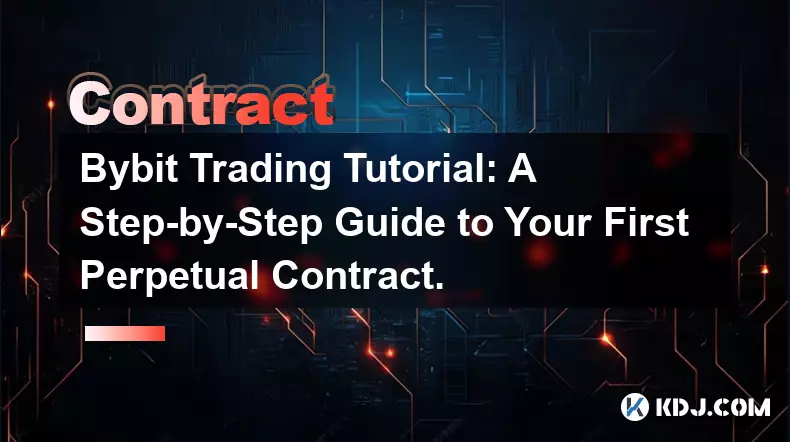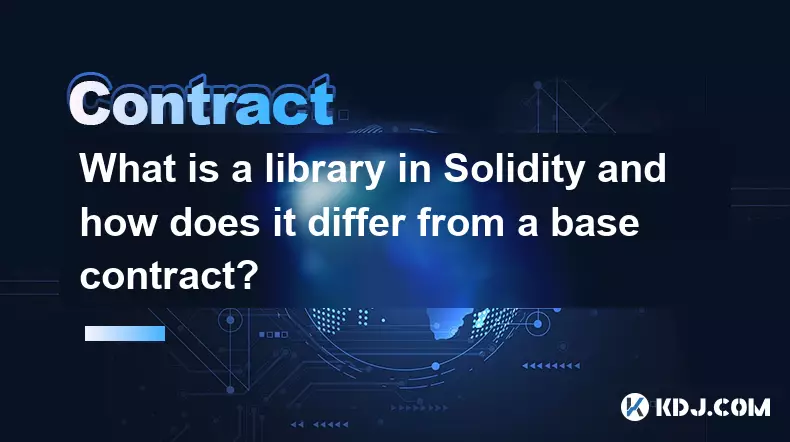-
 bitcoin
bitcoin $103128.103252 USD
-3.33% -
 ethereum
ethereum $3437.127692 USD
-4.86% -
 tether
tether $0.999700 USD
-0.02% -
 xrp
xrp $2.403993 USD
-5.73% -
 bnb
bnb $961.374676 USD
-4.11% -
 solana
solana $154.938665 USD
-8.18% -
 usd-coin
usd-coin $1.000113 USD
0.03% -
 tron
tron $0.298122 USD
0.30% -
 dogecoin
dogecoin $0.172428 USD
-5.76% -
 cardano
cardano $0.557625 USD
-7.13% -
 hyperliquid
hyperliquid $38.740701 USD
-6.51% -
 chainlink
chainlink $15.306051 USD
-7.51% -
 bitcoin-cash
bitcoin-cash $507.558648 USD
-3.26% -
 stellar
stellar $0.281899 USD
-6.74% -
 unus-sed-leo
unus-sed-leo $9.241811 USD
0.57%
Bybit Trading Tutorial: A Step-by-Step Guide to Your First Perpetual Contract.
Set up your Bybit account, enable 2FA, complete KYC for full access, deposit funds, and start trading USDT perpetual contracts with careful risk management.
Nov 04, 2025 at 08:19 pm

Getting Started with Bybit: Setting Up Your Account
1. Navigate to the official Bybit website and click on the 'Sign Up' button located at the top right corner of the homepage. You will be prompted to enter your email address, create a secure password, and complete phone verification for added security.
2. After registration, confirm your email by clicking the link sent to your inbox. This step ensures that your account is verified and ready for funding and trading activities.
3. Enable two-factor authentication (2FA) using an authenticator app like Google Authenticator. This adds an essential layer of protection against unauthorized access to your funds and personal data.
4. Complete the KYC (Know Your Customer) process if you plan to increase withdrawal limits or access certain advanced features. While Bybit allows basic trading without KYC, full functionality requires identity verification.
5. Deposit funds into your account through supported methods such as USDT, ETH, or BTC transfers. Ensure you select the correct network type when depositing stablecoins to avoid irreversible losses.
Understanding Perpetual Contracts on Bybit
1. Perpetual contracts are derivative instruments that allow traders to speculate on price movements without owning the underlying asset. These contracts do not have an expiration date, making them ideal for both short-term and long-term positions.
2. Bybit offers both inverse and linear perpetual contracts. Inverse contracts are denominated in cryptocurrency (e.g., BTCUSD), while linear contracts use stablecoins like USDT as collateral, reducing volatility exposure from the base currency.
Funding rates play a crucial role in perpetual contracts. They are periodic payments exchanged between long and short traders to keep the contract price aligned with the spot market. Monitoring these rates helps assess market sentiment and holding costs.3. Leverage options on Bybit range from 1x up to 100x depending on the symbol and position size. Higher leverage amplifies both potential gains and risks, so proper risk management is vital.
4. The platform displays key metrics including mark price, last traded price, open interest, and liquidation levels. Understanding these indicators enhances decision-making during active trades.
Executing Your First Trade on Bybit
1. From the main dashboard, navigate to the 'Derivatives' section and select 'USDT Perpetual' or another preferred contract type. Choose a trading pair such as BTC/USDT to begin.
2. Set your desired leverage using the slider or input field above the order book. For beginners, it's advisable to start with lower leverage—between 5x and 10x—to minimize liquidation risk.
3. Decide whether to go long (buy) if you expect prices to rise, or short (sell) if you anticipate a decline. Use technical analysis tools available on the integrated charting interface to support your decision.
4. Place your order by selecting either a market order for immediate execution or a limit order to specify your entry price. Confirm all details before submitting the trade.
Always set stop-loss and take-profit levels to automate exit strategies. This practice protects capital during sudden market swings and locks in profits when targets are reached.Risk Management and Position Monitoring
1. Keep a close eye on your margin balance and maintenance margin requirements. Falling below the maintenance threshold may result in partial or full liquidation of your position.
2. Adjust your position size based on account equity and current market volatility. Avoid allocating excessive capital to a single trade, especially in highly leveraged scenarios.
3. Utilize Bybit’s profit and loss calculator to simulate outcomes under different price conditions. This tool aids in refining entry and exit points prior to placing real orders.
4. Review historical funding payments in your wallet statement. Positions held over funding intervals will incur charges or receive payouts, impacting overall profitability.
5. Regularly check open orders and active positions through the 'Positions' tab. Close trades manually or let predefined triggers handle exits according to your strategy.
Frequently Asked Questions
What happens if my position gets liquidated?When your margin falls below the required maintenance level, Bybit automatically closes your position to prevent further losses. A portion of the initial margin may be deducted as a fee during this process.
Can I change leverage after opening a position?Yes, Bybit allows users to adjust leverage dynamically while a position is open. This feature enables better control over risk exposure as market conditions evolve.
How often are funding fees charged?Funding fees are exchanged every 8 hours at fixed timestamps: 00:00 UTC, 08:00 UTC, and 16:00 UTC. Traders pay or receive funds depending on whether they hold long or short positions.
Is there a minimum amount required to open a perpetual contract trade?The minimum order value varies by symbol but typically starts around $10 worth of the base asset. Check the specific contract specifications for exact thresholds before placing trades.
Disclaimer:info@kdj.com
The information provided is not trading advice. kdj.com does not assume any responsibility for any investments made based on the information provided in this article. Cryptocurrencies are highly volatile and it is highly recommended that you invest with caution after thorough research!
If you believe that the content used on this website infringes your copyright, please contact us immediately (info@kdj.com) and we will delete it promptly.
- Chinese DEX Sun Wukong: Surging Volumes and Stablecoin Reserves
- 2025-11-12 20:50:00
- Decoding Crypto's Crystal Ball: Analyzing Trends and Insights for 'Please Provide Me With The Text You Want Me To Analyze!'
- 2025-11-12 22:00:01
- Bitcoin Price Wobbles Amid ETF Flows and US Shutdown Drama
- 2025-11-12 21:20:01
- China, US, and a Bitcoin Heist: A Crypto Cold War?
- 2025-11-12 22:05:01
- VCI Global, Oobit, and OOB Tokens: A New Power Trio in Crypto?
- 2025-11-12 22:10:02
- Visa Direct, Stablecoins, and Instant Access to Funds: A New Era for Creators?
- 2025-11-12 22:10:02
Related knowledge

What is a Denial of Service (DoS) attack in a smart contract and what are its common forms?
Nov 10,2025 at 05:20am
Understanding Denial of Service in Smart Contracts1. A Denial of Service (DoS) attack in the context of smart contracts refers to a scenario where a m...

What is a cryptographic nonce used for in transaction signing?
Nov 11,2025 at 05:59am
Understanding Cryptographic Nonces in Blockchain Transactions1. A cryptographic nonce is a random or pseudo-random number used only once in the contex...

How does inheritance work in Solidity smart contracts?
Nov 11,2025 at 10:40pm
Inheritance in Solidity: Building Modular Smart Contracts1. Inheritance in Solidity allows one contract to adopt the properties and functions of anoth...

What is a Minimal Proxy Contract (EIP-1167) and how does it save gas on deployment?
Nov 12,2025 at 11:39am
What is a Minimal Proxy Contract (EIP-1167)?1. A Minimal Proxy Contract, standardized under Ethereum Improvement Proposal (EIP) 1167, is a lightweight...

What is a library in Solidity and how does it differ from a base contract?
Nov 12,2025 at 09:19am
Understanding Libraries in Solidity1. A library in Solidity is a special type of contract designed to hold reusable functions that can be shared acros...

How do you safely send Ether to another contract?
Nov 09,2025 at 06:40pm
Sending Ether to Smart Contracts: Key Considerations1. Verify that the receiving contract has a payable fallback function or a designated payable func...

What is a Denial of Service (DoS) attack in a smart contract and what are its common forms?
Nov 10,2025 at 05:20am
Understanding Denial of Service in Smart Contracts1. A Denial of Service (DoS) attack in the context of smart contracts refers to a scenario where a m...

What is a cryptographic nonce used for in transaction signing?
Nov 11,2025 at 05:59am
Understanding Cryptographic Nonces in Blockchain Transactions1. A cryptographic nonce is a random or pseudo-random number used only once in the contex...

How does inheritance work in Solidity smart contracts?
Nov 11,2025 at 10:40pm
Inheritance in Solidity: Building Modular Smart Contracts1. Inheritance in Solidity allows one contract to adopt the properties and functions of anoth...

What is a Minimal Proxy Contract (EIP-1167) and how does it save gas on deployment?
Nov 12,2025 at 11:39am
What is a Minimal Proxy Contract (EIP-1167)?1. A Minimal Proxy Contract, standardized under Ethereum Improvement Proposal (EIP) 1167, is a lightweight...

What is a library in Solidity and how does it differ from a base contract?
Nov 12,2025 at 09:19am
Understanding Libraries in Solidity1. A library in Solidity is a special type of contract designed to hold reusable functions that can be shared acros...

How do you safely send Ether to another contract?
Nov 09,2025 at 06:40pm
Sending Ether to Smart Contracts: Key Considerations1. Verify that the receiving contract has a payable fallback function or a designated payable func...
See all articles










































































